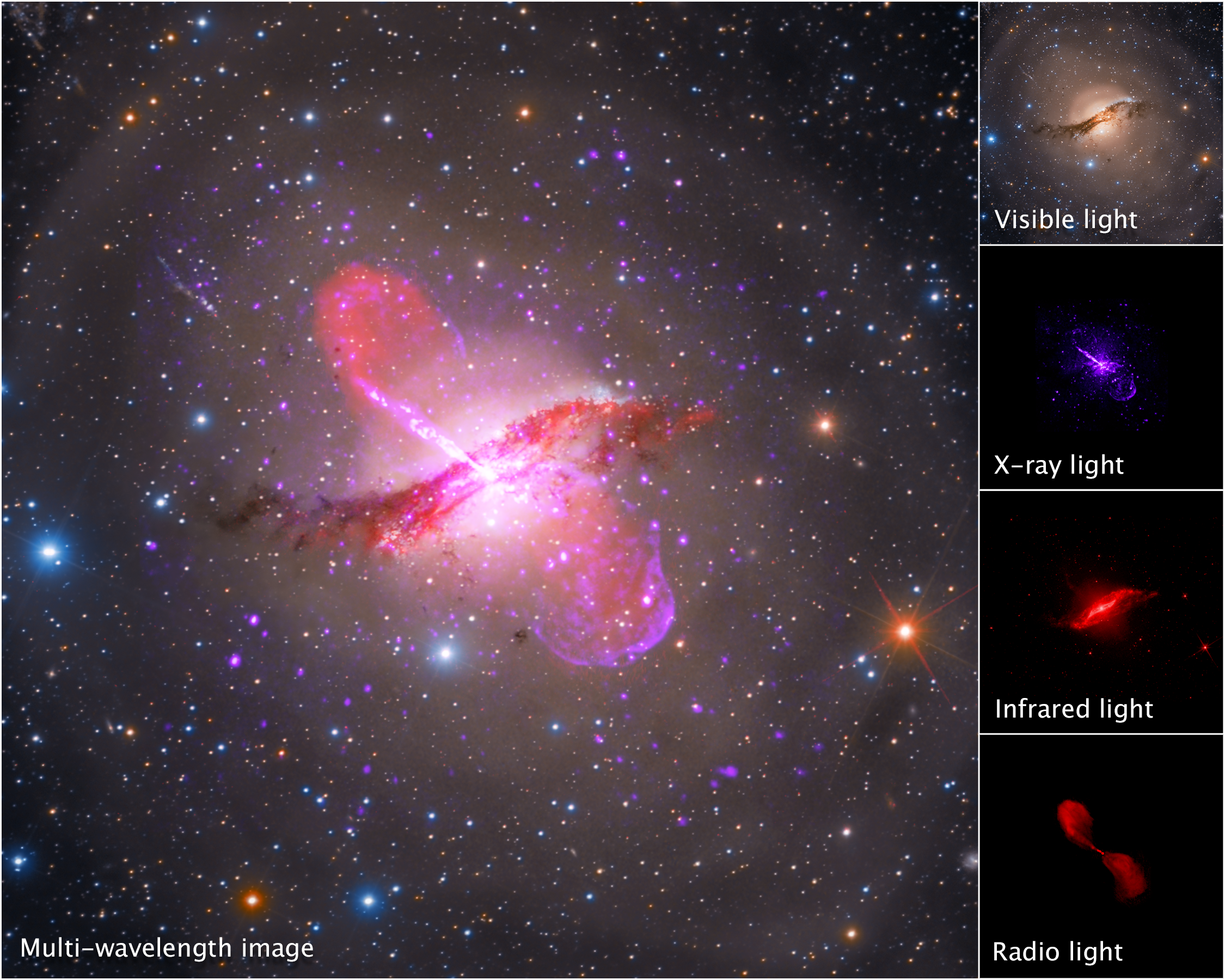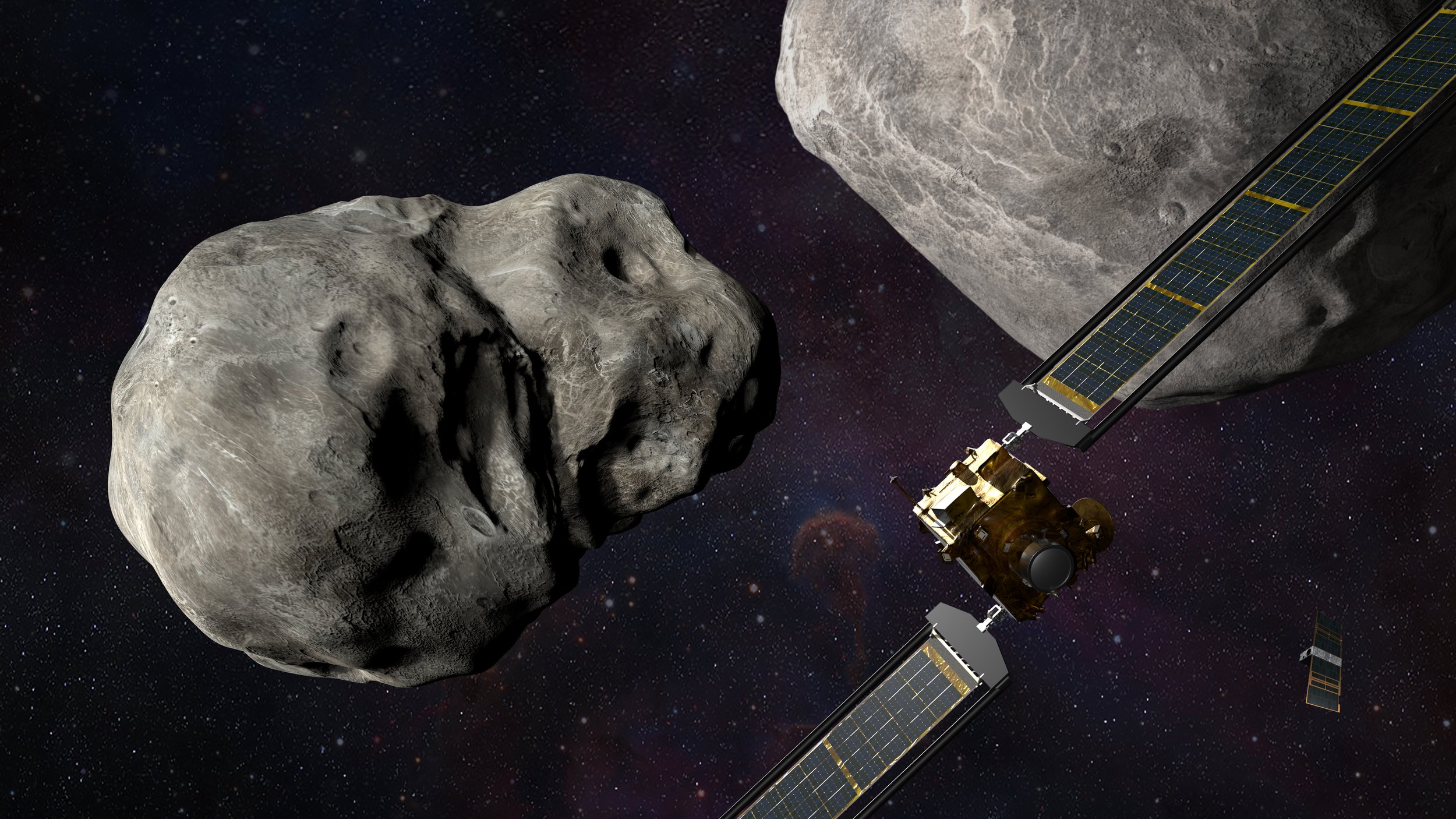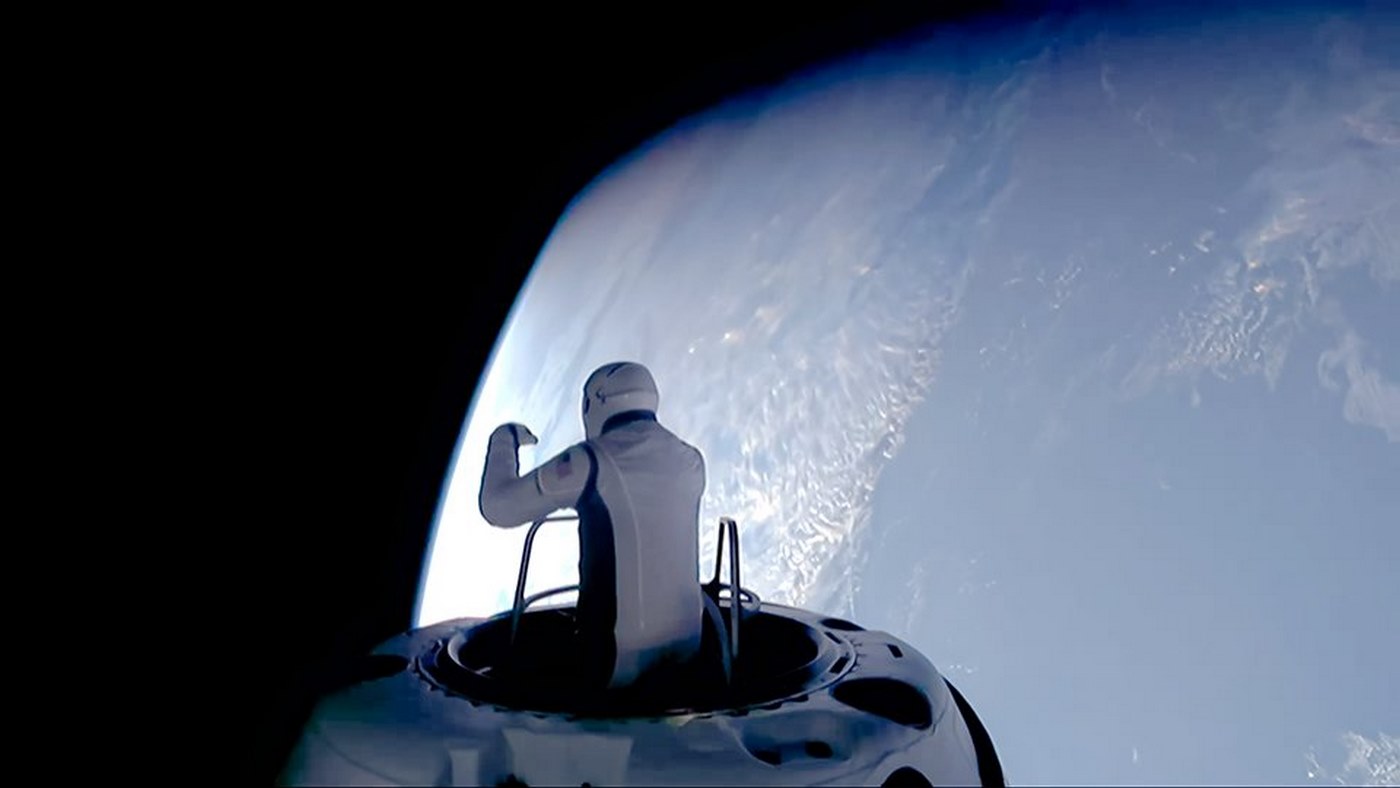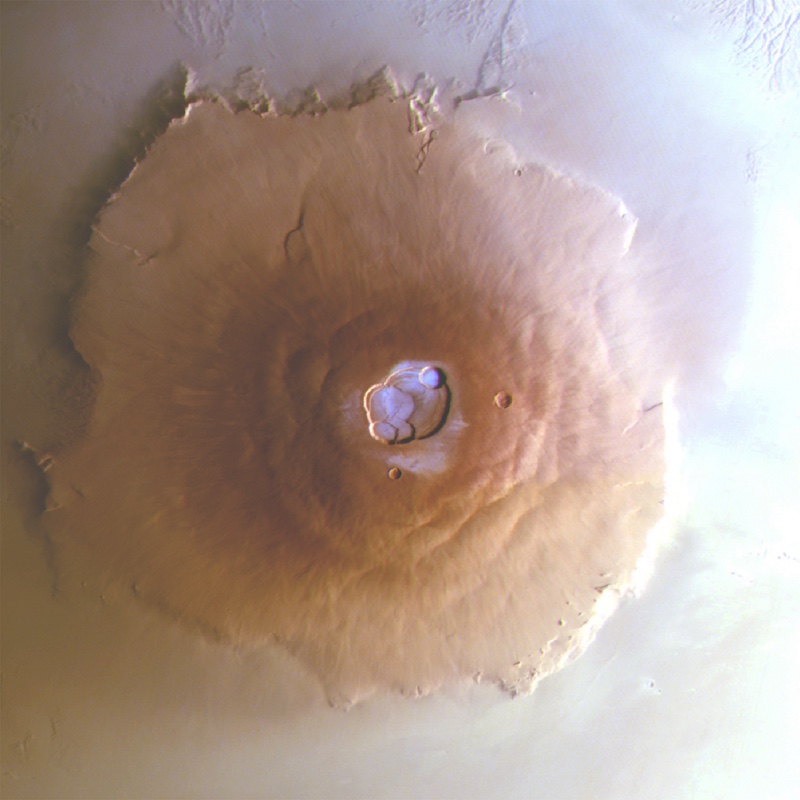PICTURED: Four observations of Centaurus A taken and rendered by the ESA. PC: X-ray: NASA/CXC/SAO; optical: Rolf Olsen; infrared: NASA/JPL-Caltech; radio: NRAO/AUI/NSF/Univ.Hertfordshire/M.Hardcastle.
Using the largest radio telescope array we possess, scientists have imaged a plasma jet in mid-ejection from the center of the black hole in the galaxy Centaurus A.
The discovery and images, made by the same team and telescopic array that captured the 2019 “gates of hell” image at the center of the supermassive black hole in the galaxy Messier 87, confirm several theories about black holes, and provides a very pretty picture besides.
Spanning the diameter of the Earth, radio telescopes tuned to 1.3mm frequency, and located from Antarctica to Greenland and Hawai’i to France, make up the Event Horizon Telescope (EHT), the sharpest eye around, and work across time zones to simultaneously image far away objects by essentially turning the entire Earth into a satellite dish.
By timestamping each image taken at each telescope array using an atomic clock, those involved can later reassemble these puzzle pieces into a complete image, though often taking years. The intense coordination required means that the EHT can only operate a few weeks out of the year, according to Daniel Cleary at Science, and that any poor weather or glitch in any of the various systems can shorten that span even further. The new images were taken during surveys of Centaurus A conducted in 2017.
Scientists already know that fast streams of particles and radiation are emitted from black holes from time to time. These jets are catapulted from the black hole at nearly the speed of light and transport energy and matter over vast galactic distances, but questions about their true nature has remained elusive.
Centaurus A is located 13 million light years away, so it’s closer than Messier 87, which is about 55 million light years away. However it’s a fraction of the size, weighing 55 million times the mass of our sun, compared to the latter’s 6 billion solar masses. This meant that the image is extremely faint, but similar in nature.
The coordinated efforts of the EHT created an extreme close-up of a jet of plasma coming from the center of Centaurus A’s black hole, at 16-times the resolution of any previously taken image, that seems to start in a cone-like shape and narrow as it travels further away.
PICTURED: The image of the plasma jet from Centaurus A, with a dark center and lighted edges. PC: Michael Janssen, Nature Astronomy. Fair Use.
No matter the size
Led by Michael Janssen at the Max-Planck Institute for Radio Astronomy, the image of the stream matched ones taken from the much bigger Messier 87 black hole, but also from much smaller ones, and proved that black holes function in pretty much the same way regardless of size.
“With the EHT we see the innermost region of jets and we can see their structure. That is very difficult and rare,” Heino Falcke, an astronomer, accompanying author and Janssen’s Ph.D. advisor, told ZME Science.
“What we found was that Cen A looks remarkably like M87. Like a giant pair of scissors- telling us that these jets are hollow. Probably due to the action of magnetic fields ejecting the plasma”.
While it seems likely all black holes produce jets the same way, that way is still unknown, regardless of the quality of the image. Science reports there are two prevailing theories for explaining how these incredibly powerful blasts are generated.
The one points the finger at the accretion disk, the swirling whirlpool of matter around the black hole, generating a magnetic field that funnels some of the matter into the jet(s) we see in the imagery. The second holds that the magnetic field responds to the rotational force of the black hole itself in order to generate such power.
The suggestion for why the edges of the plasma stream are lit up is that as the matter and radiation passes dust and gas drawn in by the black hole, the reactions create light which we can perceive.
One important detail that also emerged from the discovery is that general relativity passed another test. While the M87 image consisted of a ring of light, the Cen A image did not. Since black holes can’t be seen due to the fact that they absorb light, the way to find them is locating the light around the area at which the black hole begins, which is called the event horizon, from which the EHT takes its name.
The event horizon of Cen A is too small to see yet with our current equipment, which would have been the predicted outcome using general relativity.
Greater details of the images can be found in this figure on the corresponding paper, published in Nature Astronomy.




